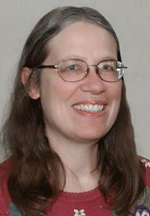- News
8 June 2012
NREL’s Kurtz wins Cherry Award from IEEE
 At the 38th IEEE’s annual Photovoltaic Specialists Conference (PVSC38) in Austin, TX, Sarah Kurtz - a principal scientist and group manager at the US Department of Energy’s National Renewable Energy Laboratory (NREL) - has received the Cherry Award from the Institute of Electrical and Electronics Engineers (IEEE).
At the 38th IEEE’s annual Photovoltaic Specialists Conference (PVSC38) in Austin, TX, Sarah Kurtz - a principal scientist and group manager at the US Department of Energy’s National Renewable Energy Laboratory (NREL) - has received the Cherry Award from the Institute of Electrical and Electronics Engineers (IEEE).
Picture: Sarah Kurtz.
“NREL is proud to have two consecutive winners of the Cherry Award, and four altogether, forone of the most important awards in the photovoltaic field,” says NREL’s director Dr Dan Arvizu.
The award is named in honor of William R. Cherry, a founder of the photovoltaic community. In the 1950s, he was instrumental in establishing solar cells as the ideal power source for space satellites and for recognizing, advocating and nurturing the use of photovoltaic systems for terrestrial applications. The award was instituted in 1980, shortly after his death. Its purpose is to recognize individual engineers or scientists who devoted a part of their professional life to the advancement of the science and technology of photovoltaic energy conversion.
Kurtz and NREL colleague Jerry Olson (who won the award in 2011) championed the early use of multi-junction solar cells by showing that a top cell of gallium indium phosphide (GaInP) and a bottom cell of gallium arsenide (GaAs) can capture and convert photons into electricity more efficiently than previous attempts at using other materials.
They showed that the multi-junction concentrator photovoltaic (CPV) cells not only use a fraction of the electronic materials used by the thicker flat-plate cells, but that they can capture more light through the course of a day.
The development was embraced by NASA, which uses multi-junction solar cells to power most space satellites, as well as its Mars rovers (Spirit and Opportunity).
NREL says that Kurtz’s work helped to illuminate how to grow high-quality cells, how to measure multi-junction cells, and how their performance is affected under various spectra. More recently, she has looked at the reliability issues of integrating multi-junction cells and solar PV in general into larger systems.
“The question on the street — how to predict the lifetime of modules — comes in different flavors,” Kurtz said during a break in the Austin conference. “They come from people who are determining the warranties, customers who want to choose the most durable product, the investor trying to justify the investment of a billion dollars, and the insurance companies wanting to know how to set rates,” she adds. “Service predictions, by site around the world, looking 20 or 30 years out, are quite challenging experiments to design.
Kurtz also conducted groundbreaking work on dilute nitrides and on measuring the individual junctions of a series of connected solar cells.
Last year, she helped form the International PV Quality Assurance Task Force to develop comparative test standards for PV modules. NREL says that she is recognized worldwide as an expert on CPV technology and has received numerous awards both as an individual and as part of a team.
Sarah Kurtz Multi-junction solar cells GaInP GaAs CPV
